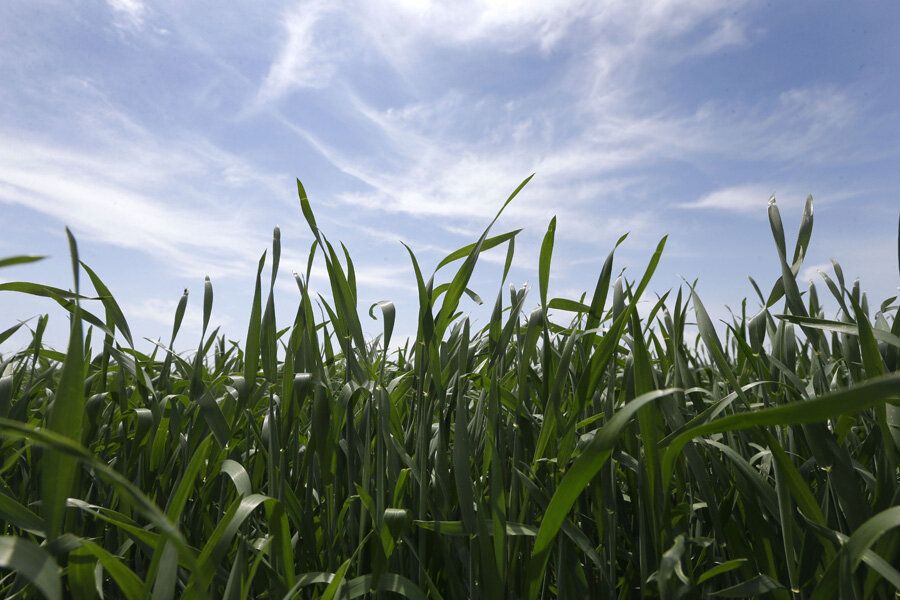Monoculture shows financial, environmental costs to US
Loading...
Monoculture—the cultivation of a single crop in a given area—allows farmers to industrialize their production systems. According to the United States Department of Agriculture’s (USDA) Farm Service Agency (FSA), corn and soy make up approximately half the planted farmland in the United States, accounting for about 60 million hectares (150 million acres). Planting just one or two crops may decrease labor costs, but results in externalized environmental, social, and health costs.
According to the USDA National Resource Conservation Service (NRCS), total soil losses from erosion on agricultural land occur at about 13 tons per hectare annually, and represented about 1.56 billion tonnes (1.725 billion tons) as of 2007. In the same year, 28 percent of all cropland was eroding at rates above acceptable soil loss tolerance rates.
USDA-NRCS studies estimated a loss of 1 kilogram (2.32 pounds) of nitrogen and .45 kilograms (1 pound) of phosphorus for each ton of soil eroded, costing farmers US$.63 and US$.64, respectively, in 2012. On the other hand, growers could obtain a benefit of US$4.93 per ton by improving water quality through better soil management. Diversifying farms is one way to prevent erosion and maintain soil quality.
Monoculture systems dominate the agricultural landscape of the US, contributing to a large portion of this erosion. However, the opportunities to improve adoption of conservation practices—such as cover cropping, conservation tillage, and crop rotation—within monoculture systems are huge. According to USDA-NRCS studies, the total cost of preventing .9 tonnes (one ton) of soil erosion is US$7.03 per acre, but farmers that participate can save society US$42.40 per acre in water quality improvement costs.
To grow just one or two crops on the same land, farmers rely heavily on fertilizer inputs. Patrick Holden, founding director of the Sustainable Food Trust, explained the true cost of fertilizer use at the 2015 Food Tank Summit: “One ton of ammonium nitrate costs a US farmer about US$387. The benefit to the farmer is between US$666 and US$2,666 per U.S. ton, but the negative costs—the damage to the environment, pollution, human health, depletion of natural capital—are between US$990 and US$5,172 per U.S. ton of ammonium nitrate. So in other words, if the damage done was charged to the farmer or the nitrogen fertilizer manufacturer, it would completely cancel out the business case for using it and transform agriculture all over the world, but that’s not happening.”
Monoculture also relies on pesticides to control weed and insect populations. However, pesticides also reduce beneficial pollinator populations. A Cornell University study attributes an estimated US$520 million worth of crop loss to pesticide use, due to the elimination of natural pest predators. Health costs of pesticide application are estimated to be US$1.1 billion per year. The World Health Organization (WHO) recently declared glyphosate, a broad-spectrum herbicide commonly used in monoculture systems, a probable carcinogen. Monoculture disproportionately causes these costs through higher use of pesticides within systems that lack crop diversity.
But it's possible to rein in these external costs and reduce the harm to our health and environment, without abandoning farmers who are already struggling to make ends meet. Diversified systems reduce the yield gap between organic and conventional systems, and restore valuable ecosystem services, reducing farmers’ input costs and offsetting externalities. According to one study, the global net value of ecosystem services could exceed fertilizer and pesticide costs, even if used on only 10 percent of global arable land.
A system-wide understanding of the true costs of monoculture to human health and the health of the environment requires more research and economic analyses. In the meantime, it’s vital to support small farmers that are practicing agroecology and incorporating crop diversity. Organizations such as the Community Agroecology Network take a robust approach to diversifying farms and addressing food insecurity through participatory research and education. The USDA Risk Management Agency (RMA) pledged to add up to 40 new crop types to insurance plans for 2016. By diversifying diets and supporting local farmers, consumers can “vote with their forks” to support diverse agricultural operations that prevent externalized costs.







